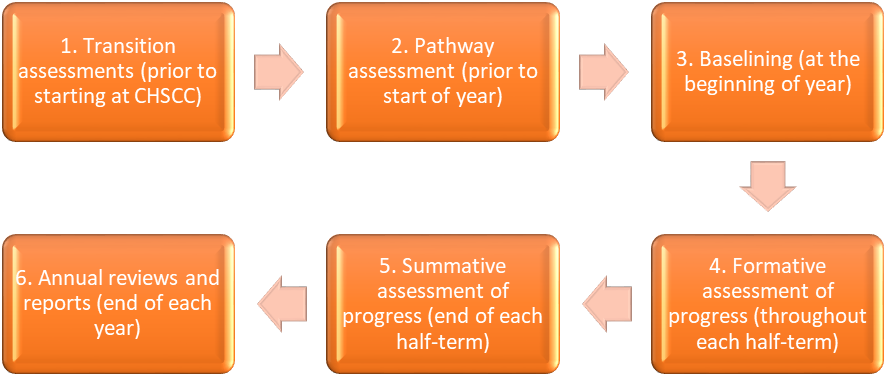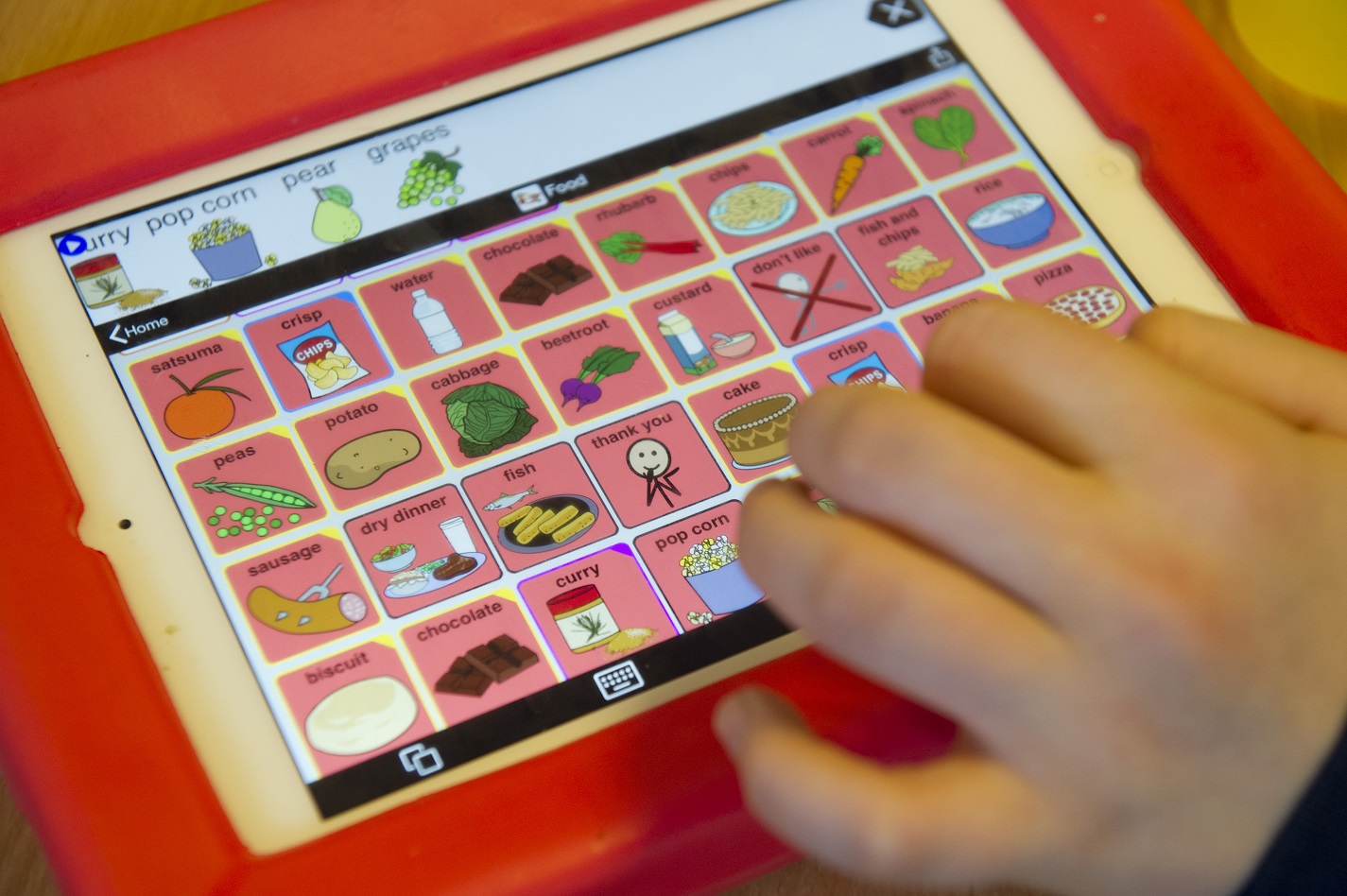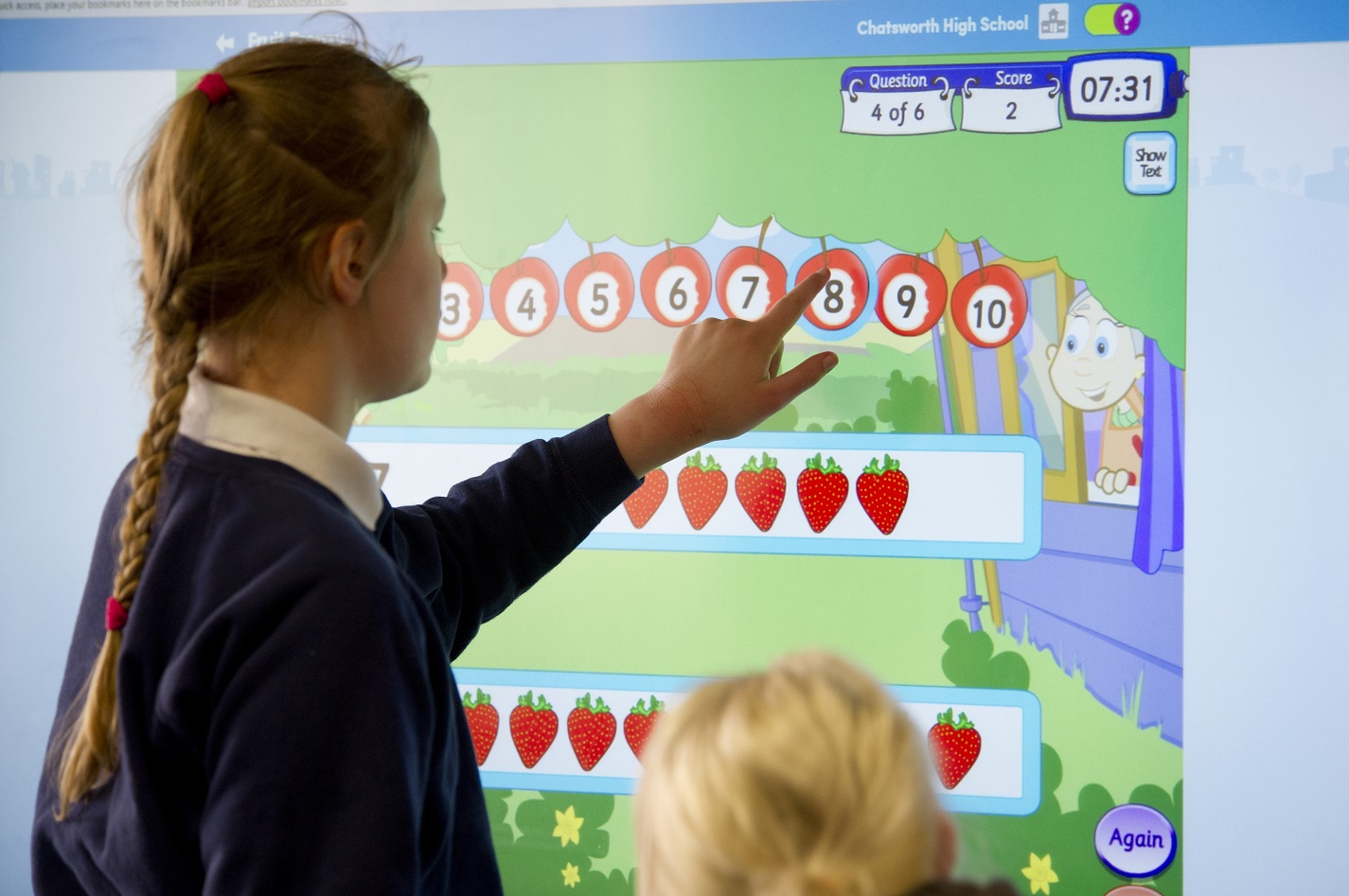Assessment
Assessment Cycle

- Transition Assessments
Prior to starting at Chatsworth High School and Community College (CHSCC), in conjunction and agreement with their previous placement, pupils participate in an ongoing, staggered transition. This includes supported visits to CHSCC and colleagues from CHSCC visiting students in their primary/previous setting. Pupils are assessed through a variety of methods, including observation, the sharing of salient documents and communication with colleagues who work with pupils in their primary/previous setting, therapists and other professionals, as well as completion of the Pathway Assessment Tool.
- Pathway Assessment
The pathways at CHSCC are designed to ensure that students develop knowledge and skills that support progression towards their longer-term goals and aspirations, as well as those of their families (please see Pathway Descriptors). To facilitate appropriate pathway placement, we work with pupils and parents on an ongoing basis to identify and track any changes in aspirations over time. This ensures pupils remain on the correct pathway throughout their CHSCC career, and allows for internal progression between pathways as appropriate. Pathways inform the grouping of pupils, the differentiated curriculum (A or B) a student follows and the focus of their individual targets.
- Baseline Assessments (Please see Baseline Assessment Process)
During the first four weeks of year 7 pupils participate in a comprehensive baseline assessment programme. In addition to the information obtained during the transition process, students participate in planned activities to ascertain at which level they are working within the various subjects. This information is collated in to the Chatsworth Assessment Tool (CAT). Once identified through the baseline process, pupils can then be set appropriate targets to address skill gaps, in conjunction with the outcomes and objectives as stipulated on the pupil's EHCP.
Pupils undergo a similar process at the beginning of each subsequent year at CHSCC. This knowledge retention assessment is carried out during the first two weeks of each year from 8-14 to assess what learning pupils have retained over the summer break.
- Formative Assessment of Progress
The assessment cycle at CHSCC is half-termly. Pupils are set new targets for the beginning of each half-term and summative assessment is conducted at the end of each half-term. Whilst skill gaps are identified by the baseline assessment process, targets are also influenced by the goals and aspirations of pupils and their families. Data from the CHSCC Aspiration Days, annual reviews, parent/carer events and the outcomes and objectives found within each learner’s Education, Health and Care Plan (EHCP) inform us of the skill gaps that are most important to each individual student and their family in terms of achieving the learner’s future goals. This enables us to build a personalised learning programme around each individual. All pupils have five cores targets that are directly related to the themes of the outcomes and objectives found on the EHCP. These targets can be embedded into any session, but each should be addressed at least once per day. If a target does not naturally fit into the day’s activities, teachers create opportunities for pupils to practise them.
Pupils do not have specific targets for non-core subjects, but rather demonstrate progress by moving along the aforementioned learning ladders.
Throughout each half-term pupils are consistently assessed in a formative manner, both as learning is happening and in reflection, using a variety of strategies. Concurrently, various evidence of progress is collected and collated. This supports forward planning and enables pupils to build on previous learning. Similarly, ongoing assessment ensures swift interventions can be implemented if a learner is not progressing as rapidly as expected.
- Summative Assessment of Progress
At the end of each half-termly cycle summative assessment of targets takes place. At this point all previous formative assessment and evidence is collated to facilitate judgements against targets. Targets may be fully achieved, partially achieved/working towards or not achieved. This data is used to inform the next steps for each learner, enabling them to develop and build upon prior learning. Summative assessment data is subsequently employed to ascertain that pupils are making at least good progress. This enables the engagement of appropriate interventions if a learner or group of pupils are not progressing as well as expected.
- Annual Reviews and Reports
Reviews and Reports occur on a yearly cycle. The report is the document that summarises a whole period of learning, such as at the end of year. This demonstrates the progress the learner has made in all aspects of their education during that given period, including against core targets and in subject learning.
The Annual Review brings together the school representatives with the learner (if appropriate), family and other relevant professionals from the local authority, health and care. The purpose of this meeting is to look back at the progress the learner has made in the previous year, as well as agreeing and planning the learning for the year to come. This feeds into the EHCP outcomes and objectives, which then inform the learning focus and targets for the subsequent year.



